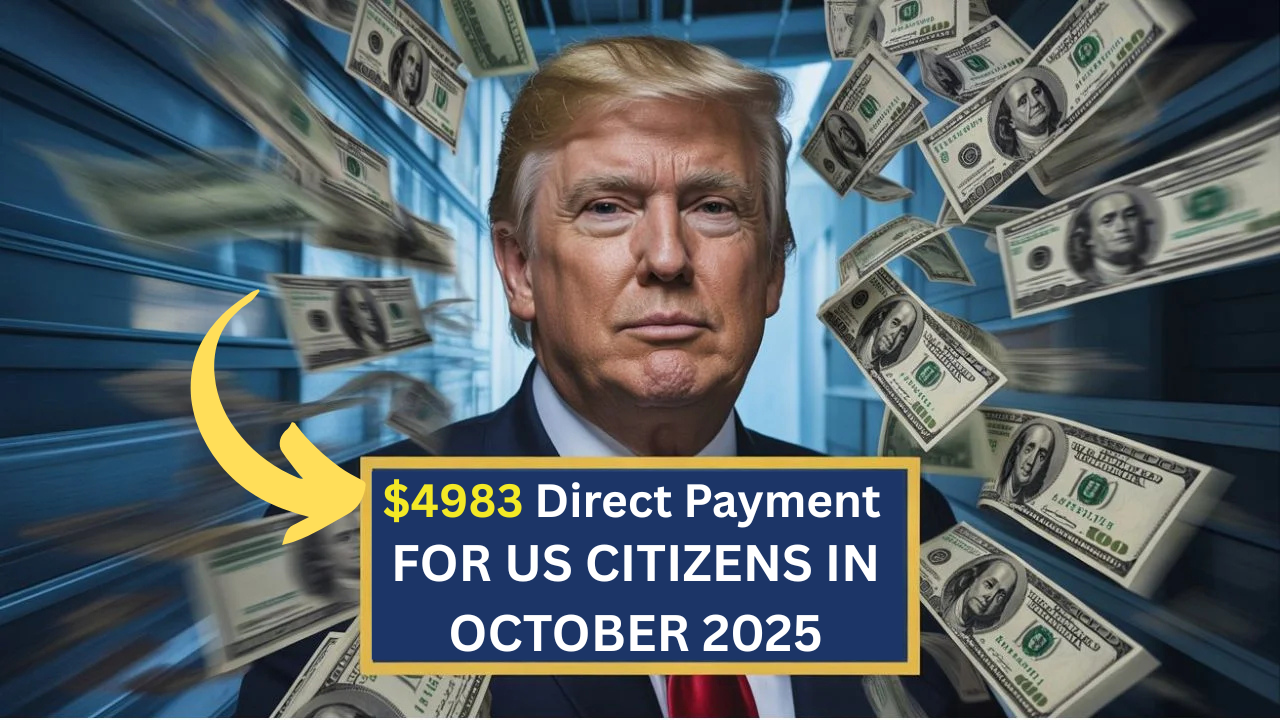$4983 Direct Deposit :Amid rising living costs and economic uncertainties, many Americans are welcoming a much-needed reprieve: a direct deposit of $4,983 into eligible bank accounts by October 2025. This payment is part of a broader federal government effort to help citizens facing financial hardship due to inflation, rising healthcare costs, and post-pandemic economic challenges.
If you’ve heard about this plan but aren’t sure whether you’re eligible or what the deposit is for, you’re not alone. Here’s what we know so far.
What is a $4,983 Direct Deposit?
The $4,983 payment is a federal disbursement program intended to provide temporary financial relief to specific groups of American citizens. While it is not universal like stimulus checks, it is a targeted payment, meaning it is designed to reach Americans who meet specific income, age, or benefit-status criteria.
This direct deposit is not part of a tax refund or Social Security COLA increase, but rather a one-time supplemental aid package approved as part of a broader budget relief initiative.
Why October 2025?
The timing of the deposits is no coincidence. October marks the beginning of the federal fiscal year, and is the month many government agencies make adjustments to budgets, benefits, and supplemental programs. The $4,983 payment was scheduled for this month to coincide with updated income assessments and cost-of-living adjustments, ensuring recipients receive timely financial assistance before the holidays and winter months.
Who is eligible?
There are several key categories for receiving the $4,983 direct deposit. While official guidelines may vary slightly from state to state, the basic federal guidelines include the following:
1. Retired Seniors
-
Individuals aged 62 and older receiving Social Security Retirement benefits.
-
Those with annual income below a certain threshold (typically $75,000 or less for individuals).
2. Low-to-Middle Income Households
-
Individuals or families enrolled in government assistance programs, such as:
-
Supplemental Security Income (SSI)
-
Supplemental Nutrition Assistance Program (SNAP)
-
Medicaid
-
-
Households with an Adjusted Gross Income (AGI) under specific limits (e.g., under $125,000 for a family of four).
3. Veterans and Disabled Citizens
-
Recipients of VA disability benefits or Social Security Disability Insurance (SSDI).
-
Certain groups of permanently disabled individuals with limited income or assets.
4. Caregivers and Essential Workers
-
A lesser-known qualifying group includes unpaid family caregivers and some categories of essential workers, particularly those who served during the pandemic and have not yet received federal compensation or bonuses.
How will the Payment be Received?
Most recipients will receive the $4,983 payment directly deposited into their bank account, using the information on file with their federal benefits or IRS records. If you received previous stimulus checks or tax refunds electronically, your account information is likely already on file.
If you don’t have direct deposit information on file, your check may be mailed to your last known address. It’s recommended that you verify or update your information through the IRS website or SSA.gov, depending on which program you participate in.
Is this payment taxable?
In most cases, no—the $4,983 payment is considered non-taxable income, just like previous stimulus payments. However, recipients should keep documentation for tax season, especially if their income situation changes. If you’re unsure how this might affect your 2025 tax filing, consult a tax professional or check IRS.gov for updates.
What Should You Do Now?
If you believe you may qualify:
-
Check your eligibility through official channels like the Social Security Administration (SSA), the IRS, or your state’s human services department.
-
Ensure your direct deposit details are current.
-
Avoid scams—the government will never call, text, or email you asking for your personal information to “release” a payment.
Final Thoughts
This $4,983 direct deposit isn’t just a sum of money; it’s a sign that the government is still paying attention to the struggles of many Americans. Whether it helps cover rent, medication, groceries, or long-overdue car repairs, this assistance can truly make a difference.
In times like these, even a small amount of help can be invaluable, and for millions of people, this deposit in October 2025 could come at just the right time.

